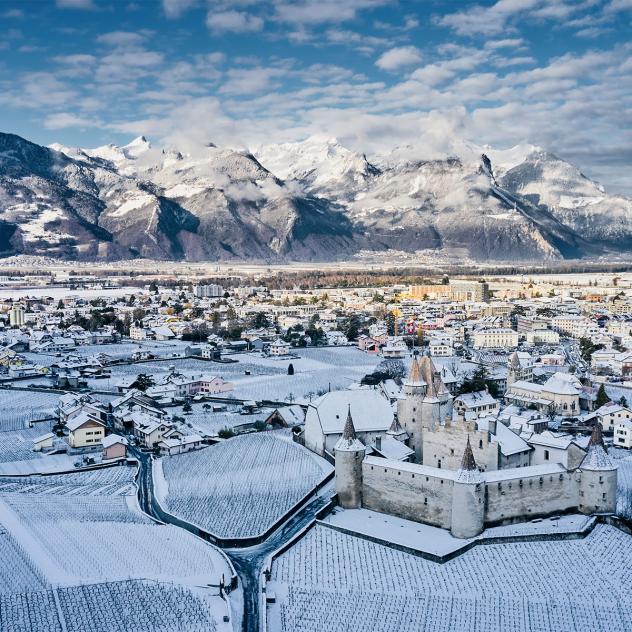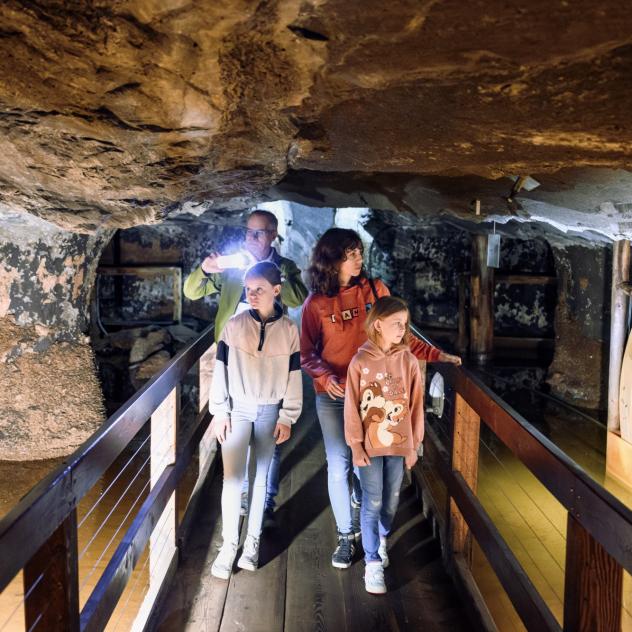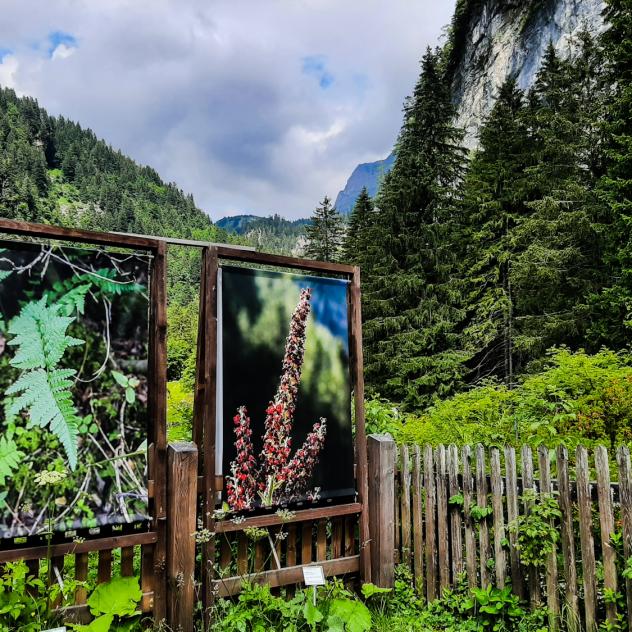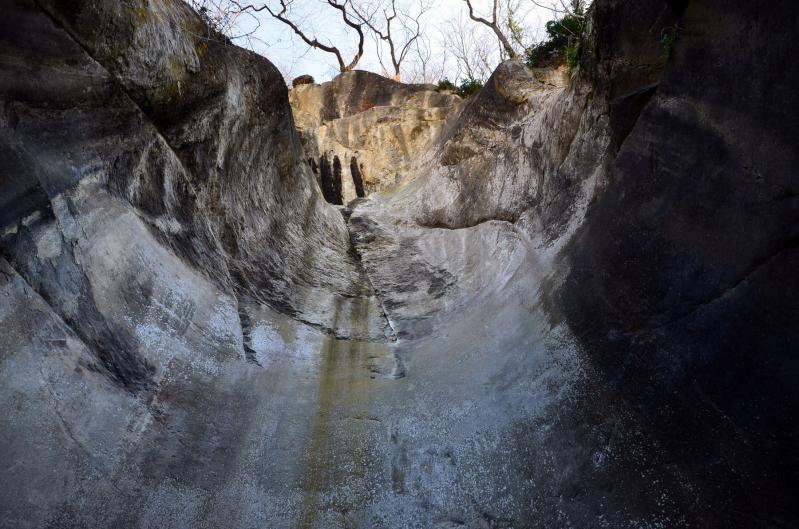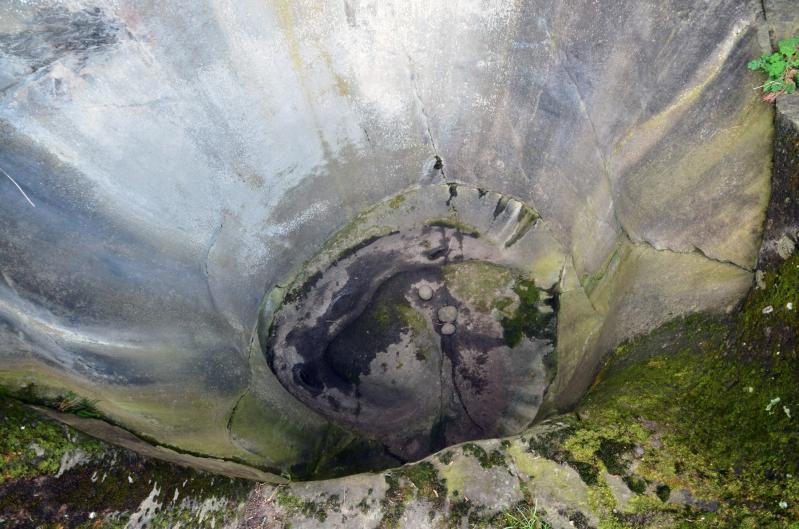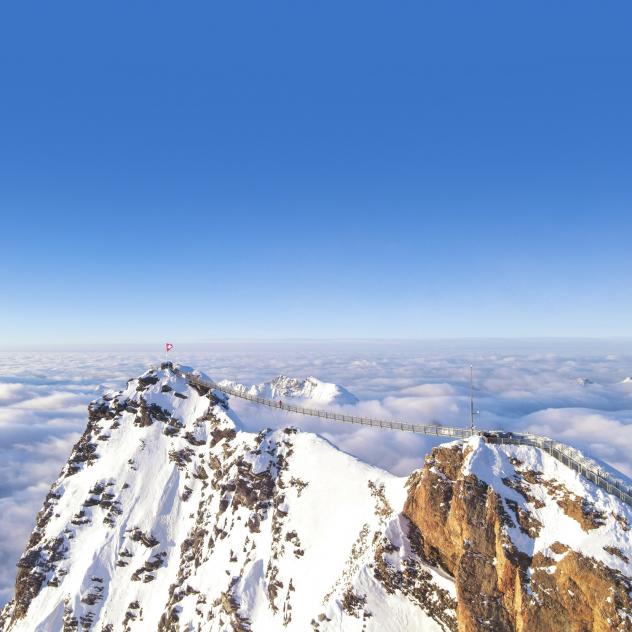
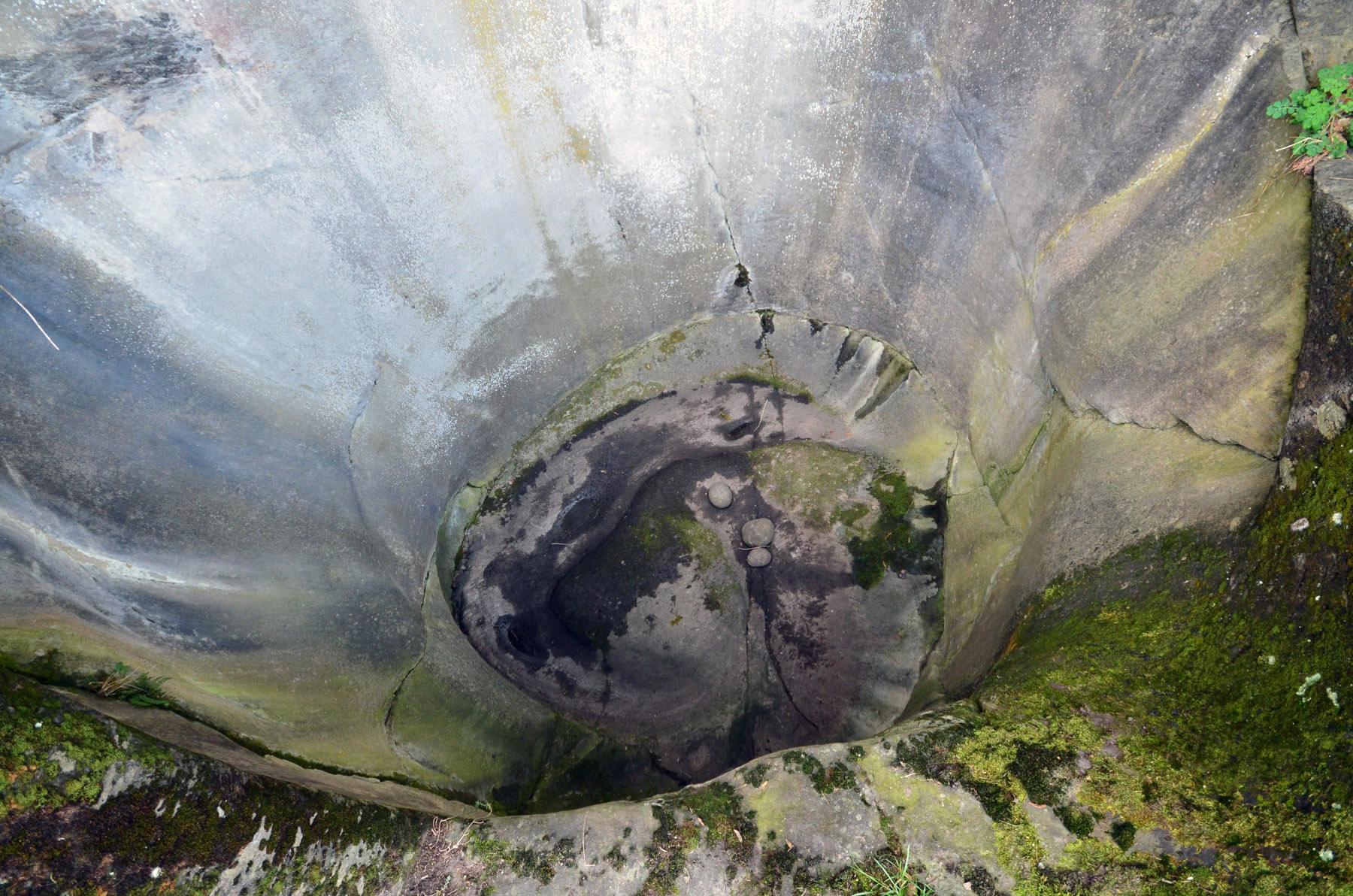
arrow_backBack
Glacial Pothole of the Caillettes
Contact information
place
Office du Tourisme de Bex
Avenue de la Gare 68
1880 Bex
Overview
The rock walls of the Saint-Maurice gorge have been hollowed out into some very unusual shapes. The Caillette's pothole, a large circular hole, is one of its most impressive examples.
The Caillettes glacial cauldron is part of the history of the ice ages, particularly the last one, known as the Würm period (around 10 to 17,000 years ago). It has impressive dimensions: 5 m in diameter and 8 m high, 4 m from the outlet, which makes it one of the largest in Europe.
Information boards tell you about its formation and its rediscovery in the 1960s. While visiting the Marmite, discover Jean de Charpentier (1786-1855), the geologist and director of the Bex Salt Mines who examined the Marmite on numerous occasions and played a key role in establishing the theory of successive glaciations of the Earth.
Located on the property of the Kuonen family, the Caillettes glacial cauldron was dug out of the Cretaceous white urgonian limestone of which the Chiètres hill is partly composed. It is the work of subglacial currents (streams).
At the glacial maximum, 22,000 years ago, a layer of ice varying between 1,200 and 1,600 m covered the region. It should be pointed out that a sub-glacial stream can reach a speed of 150 km/h, which easily explains why it attacks the rock and seeps into the smallest depressions. The whirlpools that form penetrate these small crevices and the water loaded with rock particles - more or less important - will enlarge them. Little by little the friction attacks the rock and forms a cauldron, hence the name of glacial cauldron. This is how the beautiful Caillettes cauldron was probably formed.
The theory of glaciers was born in the Bex region thanks in particular to Jean de Charpentier (1796-1855), geologist and director of the Bex saltworks, and Louis Agassiz (1807-1873). Both carried out intensive fieldwork on the Rhone plain which led them to establish the famous theory of glaciers. Although it was Louis Agassiz who first published his results - beating his friend to the punch - the authorship of the observation goes to a farmer from the Bagnes valley, Charles Perraudin (1767-1858). It was he who, while analysing the landscape in his valley, was the first to put forward the idea that a glacier could have covered the valleys and dragged the erratic blocks with it.
This theory, presented by Louis Agassiz on 24 July 1837 at a meeting of the Swiss Society of Natural Sciences, caused a huge scandal. It called into question the Bible and Genesis and thus the origin of the Earth. The protests were, of course, widespread and tumultuous. Despite this widespread protest and that of other naturalists, the glacial theory gradually spread and was finally affirmed between 1840 and 1841.
Jean-Pierre Perraudin (1767-1858), a farmer living in the village of Lourtier in the Val de Bagnes (Valais), was one of the first, along with the Scottish geologist James Hutton, to put forward the hypothesis that the boulders had been transported by glaciers. He explained his theory to visitors to the Val de Bagnes, including Jean de Charpentier (1786-1855), at that time director of the Bex saltworks. Perraudin's modest living conditions did not prevent him from making remarkable observations; through the study of glacial striations, he put forward the hypothesis that the Val de Bagnes glacier must have once reached at least Martigny. He entrusted his remarks to Ignace Venetz (1788-1859), a cantonal engineer from the Valais.
Jean de Charpentier then began researching the erratic terrain of the Rhone Valley and his observations led him to the Monthey region, where he studied the gigantic erratic blocks of the area (the largest, the Pierre des Marmettes, has a volume of 1824 m3). The glacial theory became increasingly refined, but had few supporters among the naturalists of the time. One of them, Louis Agassiz (1807-1873), was persuaded by de Charpentier and started a new programme of glacier observation. On 24 July 1837, at a meeting of the Swiss Society of Natural Sciences, Agassiz, who should have given a lecture on fossil fish, scandalised the audience with his famous speech on glaciers.
Sources :
J. Martin, La marmite glaciaire des Caillettes, Bulletin de la Muritienne, 1964.
M. Burri, Les roches, Martigny, 1994, 3rd edition.
R. Pièce, " Jean de Charpentier ", Revue historique du Mandement de Bex, 32, 1999.
Practical information
Location
Getting to Bex
Car parks and transport
Brochures and maps
Practical information
- location_on
Office du Tourisme de Bex
Avenue de la Gare 68
1880 Bex
- phone_in_talk
+41 24 463 30 80
- mail
info@bex-tourisme.ch
Facebook
Instagram

